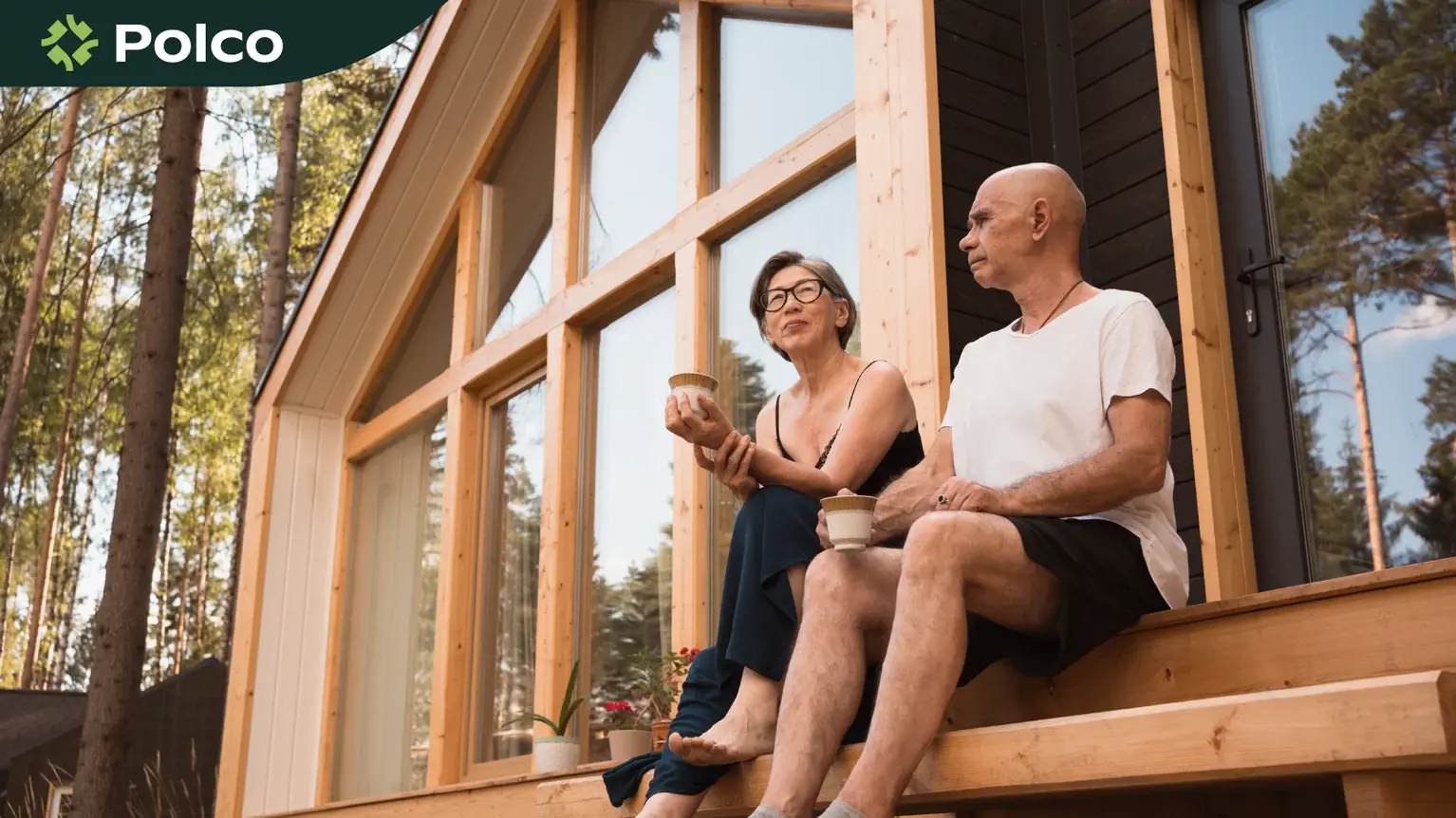Housing Impacts on Aging in Place and How You Can Drive Solutions
By Polco on August 28, 2023

Experts weigh in on how housing impacts aging in place. Learn how you can ensure older adults remain in your community as they age.
The American population is growing increasingly older. At the same time, there is a national housing shortage. These two topics are closely connected as housing needs change as people age.
How can state governments, Area Agencies on Aging, housing planners, and community leaders address immediate housing needs while also planning for the future?
Experts offer answers to that question in Polco’s recent webinar: "Housing Impacts on Aging in Place and How You Can Drive Solutions."

Michelle Kobayashi, Principal Research Strategist at Polco, presents data from the Community Assessment Survey for Older Adults (CASOA). CASOA is a national survey that asks the older generation for their opinions about the quality of their government services and community. The data show that housing and aging in place have emerged as a top priority for older adults.
Then, Tauhric Brown, President and Chief Executive Officer of CICOA Aging & In-Home Solutions in Indianapolis, IN, and Diana Elrod, Owner of Diana R. Elrod Consulting, discuss how their organizations use data to support aging in place.
How Older Adults Benefit Communities
Michelle Kobayashi is a leader in survey research who has studied public opinion for the past 30 years. She has found that the issues most important to older adults also matter to residents of all ages.
"Making communities better for our older residents often has benefits for other age groups," she said.
However, these contributions are often overlooked. Cities that underestimate the value of their older residents miss out on many community benefits.
Older Adult Contributions
- Older adults serve as valuable mentors.
- Many older adults are caregivers, a crucial contribution given the national shortage of nursing home care.
- Older adults provide social capital, constituting a significant portion of volunteers.
- They also make substantial contributions to the economy.
- Many older adults maintain a sense of community and social connection.They attend churches, events, and clubs more frequently than other generations.
For these reasons, local governments must prioritize aging in place.
What CASOA Data Say About Older Adults and Housing
CASOA data reveal that the majority of older adults wish to remain in their homes as they age. However, most communities score very low on housing-related services.
For example, fewer than 30% of older adults approve of affordable housing, accessible housing (with features like ramps), mixed-use neighborhoods, and short- and long-term care options. Older residents also highlight home maintenance challenges, such as yard work and heavy lifting, as significant issues.
"The bottom line is that most older adults like where they live and want to stay there. That's why we're all here–to discuss the best plans and strategies to support them in aging in place," Kobayashi said.
How To Help Older Adults Age in Place
This interview has been edited for length. Watch the video for the full discussion.
What barriers to aging in place are you working to overcome?
Diana Elrod: One of the challenges we face is that meeting these requirements often requires a significant increase in community density, which has both positive and challenging aspects. The primary issue with such density-increasing developments is community concern and resistance.
Tauhric Brown: I also think about the direct workforce shortage that we have in this country, particularly here in central Indiana. For older adults to age in place as long as possible, there must be enough individuals to provide necessary in-home services.
In your opinion, why is data essential when handling challenges like the ones you both mentioned?
Diana Elrod: An informed community is a proactive and supportive community. Using data to identify issues allows people to unite around facts rather than misconceptions.
Tauhric Brown: Data is crucial for making well-informed business decisions that benefit the community members we are fortunate to serve. It's essential to deeply understand the specific needs and areas for improvement.
"[Data lets us know] who we need to collaborate with and bring to the table to help gain more of that buy-in and acknowledgment … We're working towards this universal goal for our older adults."
How do you gather community data and engage residents in planning and decision-making?

Diana Elrod: In Lafayette, California, we used [Balancing Act’s housing simulation to] involve the community in comprehending how density gets distributed across different parts of the city.
Tauhric Brown: At CICOA, we've heavily relied on the Polco Community Assessment Survey for Older Adults to comprehend the perspectives of our older adults. We also collaborate with a data and research team that partners with major universities such as Re Street Institute, Stanford University, and Indiana University. This participation in studies provides insights into needs, availability, and affordability due to our extensive work with health systems.
Housing and Aging In Place Resources for Your Community
For housing: Balancing Act from Polco's housing simulation shows residents what's possible. Engage and see how your community would solve housing shortages in your city.
Learn more about Balancing Act's Housing Simulation >>
For older adults: The Community Assessment Survey for Older Adults (CASOA) lets you learn directly from older residents. See how best to accommodate the housing needs of your aging population. Contact us for an expert to reach out with more information or to help you get started.
Related Articles
- How Local Governments Can Help Older Adults Age in Place
- The Top 10 Community Needs According to US Residents
- How to Prepare Your Community for the Aging Population
Popular posts
Sign-up for Updates
You May Also Like
These Related Stories

How To Engage Residents in Housing Solutions

Tackling Government’s Wicked Challenges: From Budget Shortfalls to Climate Change



